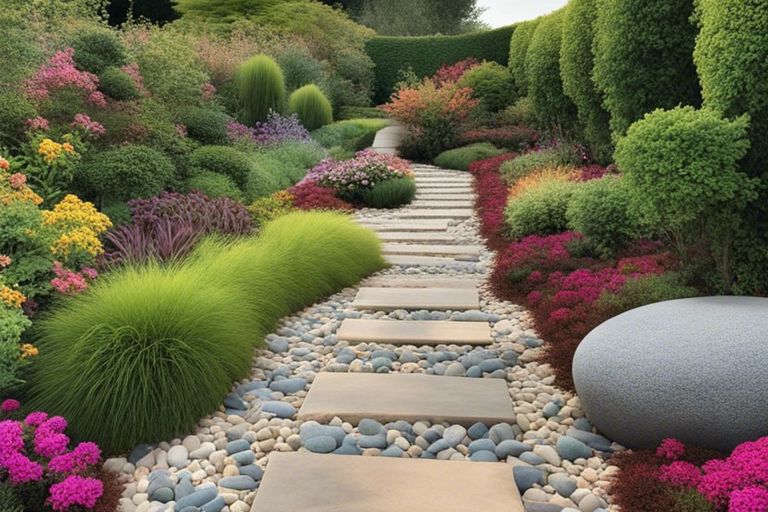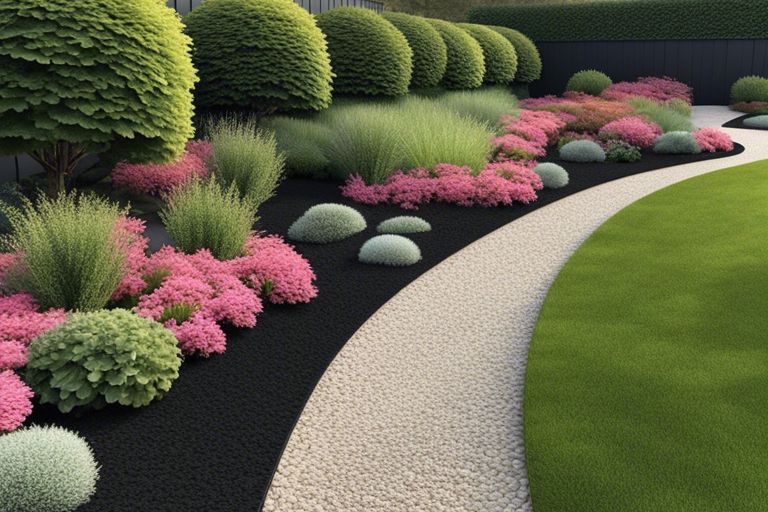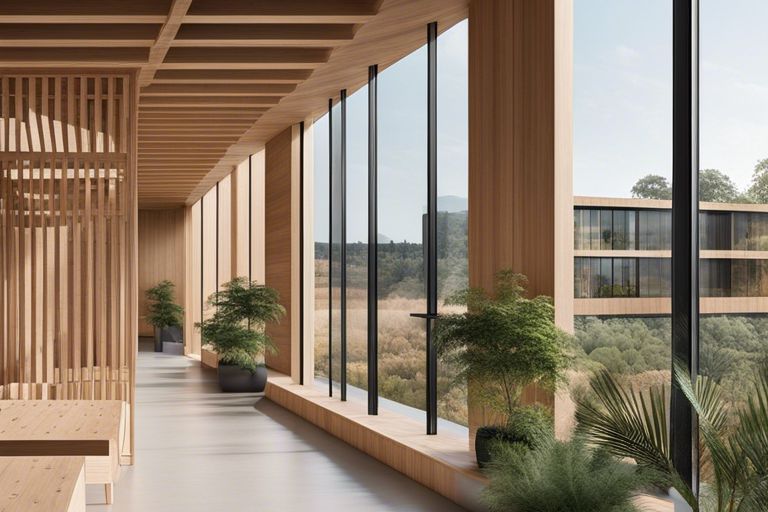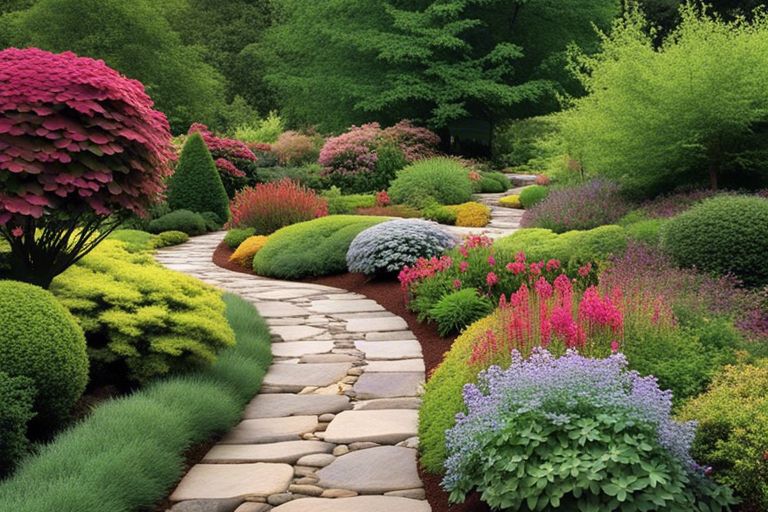Landscape design is a delightful journey, and selecting the right landscape stone can transform your garden into a stunning oasis. As you launch on this process, it’s vital to consider durability, color, and texture, ensuring that your choice complements both your personal style and the overall environment. The right stone not only enhances aesthetic appeal but also provides functionality, creating pathways, borders, and focal points throughout your garden. Join me as we explore the crucial steps to guide you in making this crucial decision, ensuring your garden reflects your heartfelt vision.
Key Takeaways:
- Assess your garden’s style: Consider the overall aesthetic of your garden to choose a stone that complements the existing landscape.
- Consider functionality: Determine the purpose of the stone, such as for pathways, borders, or ground cover, to select the most practical option.
- Evaluate stone types: Research different types of landscape stones, including their durability and maintenance requirements, to make an informed decision.
Identifying Your Garden’s Needs
As you initiate on the exciting journey of selecting the right landscape stone for your garden, it’s imperative to first understand the unique requirements of your outdoor space. Identifying your garden’s needs involves a thorough assessment of various factors such as soil type, drainage, weather conditions, and sunlight exposure. By taking the time to investigate deep into these elements, you not only ensure that the landscape stone you choose complements your garden’s aesthetics but also supports its overall health and longevity.
Assessing Soil Type and Drainage
Soil is the foundation of any garden, and its type significantly influences the selection of landscape stone. Begin by determining whether your soil is sandy, clay, loamy, or rocky. Each type has its own characteristics, with sandy soils draining quickly, while clay soils retain moisture but can become compacted. This is where understanding drainage comes into play; choosing stone that promotes proper water flow can mean the difference between a thriving garden and a waterlogged mess. For instance, decorative gravel can enhance drainage, whereas heavy stones might exacerbate poor drainage issues.
Moreover, you should consider how much moisture your soil retains and how it interacts with precipitation in your area. If your garden tends to flood, incorporating permeable stones can be a beneficial choice, helping to manage excess water. Conversely, if you live in a climate prone to dry spells, opting for stones that encourage soil moisture retention will support healthier plants.
Considering Climate and Sunlight
Identifying the climate in which your garden exists is another critical aspect to consider when selecting your landscape stone. Different regions experience varying levels of precipitation, temperature extremes, and sunlight exposure, all of which can affect both your stone choice and the plants in your garden. For example, if you reside in a particularly hot climate, lighter stones can help reflect heat and keep your garden cooler, while darker stones might absorb too much warmth, placing stress on your plants.
Gardens exposed to full sunlight often require materials that can withstand harsh UV rays without degrading, making choices like granite or basalt favorable. Additionally, understanding how sunlight moves across your garden throughout the day will help you select stones that enhance your garden’s visual appeal while ensuring your plants receive the imperative light they need. It’s all about creating a harmonious balance between the aesthetic aspects of your landscape and the survival of your flora.
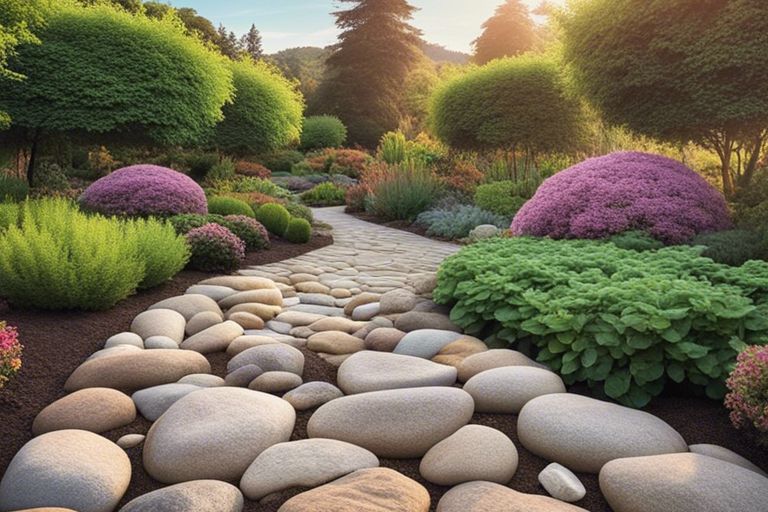
Types of Landscape Stone
It is imperative to understand the various types of landscape stones available for your garden. Each type offers distinct characteristics and benefits, making it crucial for you to choose wisely based on your specific needs. Here’s a breakdown of common landscape stone varieties:
| Natural Stone | Includes options like bluestone, fieldstone, and river rock. |
| Manufactured Stone | Comprises concrete pavers, porcelain pavers, and retaining wall stones. |
| Decorative Stone | Used primarily for aesthetics; examples are gravel, crushed stone, and pebbles. |
| Flagstone | Flat stones ideal for patios and walkways. |
| Boulders | Large stones that can create focal points in a landscape. |
- Natural Stones – They are aesthetically pleasing and add authenticity to your garden.
- Manufactured Stones – Offer versatility in design and are often more affordable.
- Decorative Stones – Enhance the visual appeal of your garden.
- Flagstones – Provide durable surfaces for outdoor paths.
- Boulders – Serve as dramatic centerpieces in landscape design.
Assume that you have an understanding of these different types of landscape stone; this knowledge will aid in making the best decision for your garden. If you’re looking for more guidance on sourcing stones, you might find it helpful to visit What is a cheap way to get loads of stones for my garden? to explore your options.
Natural Stone Options (e.g., Bluestone, Fieldstone)
Stone is a timeless choice for many gardeners, chosen for its organic beauty and uniqueness. Bluestone and fieldstone are popular types that can lend a natural, rustic feel to your outdoor space. Bluestone, generally blue-gray in color, is ideal for patios and walkways due to its durability and slip resistance. Fieldstone, known for its irregular shapes and colors, can be used creatively in walls or garden borders, emphasizing a more wild and natural ethos of gardening.
Additionally, the use of river rock provides a smooth texture that prevents erosion and works well for drainage solutions. When you incorporate these natural stones into your landscape design, you create a cohesive blend with the existing flora, attracting wildlife and enhancing biodiversity.
Manufactured Stone Options (e.g., Concrete Pavers, Porcelain)
On the other hand, manufactured stones like concrete pavers and porcelain tiles offer an impressive range of styles and ease of installation. Concrete pavers are known for their durability and versatility, providing endless possibilities in terms of shape and color. You can use them to create intricate patterns in your garden paths or patios, allowing you to express your creativity.
Porcelain, a newer addition to garden design, gives you a refined look with the strength to withstand all weather conditions. With porcelain pavers, you obtain a lightweight option that retains its color and resilience over time, making it perfect for outdoor settings that require both aesthetics and functionality.
It is critical to weigh the advantages and disadvantages of manufactured stones. While some options can be more expensive upfront, they often require less maintenance and can last for many years without deterioration. This long-term benefit often outweighs the initial investment, providing you with peace of mind and a stunning garden to enjoy.
Aesthetic Considerations
Now, as you explore the diverse world of landscape stones, it is vital to consider how these materials will enhance the overall aesthetic of your garden. The right choice of stones not only contributes to the style and character of your space but also complements the natural elements you have at play. Deliberating on colors, textures, patterns, and how they interplay within the environment will ensure that your garden is not only functional but also strikingly beautiful.
Color and Texture Options
Considerations regarding color and texture can significantly influence the mood of your garden. Stones come in a plethora of shades, from muted earth tones to vibrant hues, each evoking different feelings. For instance, cool greys and blues lend a calming effect, while warm browns and reds bring a sense of warmth and richness. Moreover, the texture of the stones—be it smooth, rough, polished, or uncut—adds depth and interest to your landscape, making it engaging for both the eye and the touch.
Pattern and Design Ideas
Color and texture go hand-in-hand when it comes to defining the patterns and design ideas you might incorporate into your garden space. By thoughtfully arranging different shapes and sizes of stones, you can create dynamic pathways, stunning focal points, or tranquil seating areas that beckon you to relax. Whether you opt for a uniform look or a more eclectic style, the way stones interconnect can evoke a sense of harmony and visual appeal that resonates with your personal taste.
With such a variety of design possibilities at your fingertips, you can launch on an exciting journey of discovery! Think about using geometric arrangements for a modern look, or perhaps incorporating naturalistic patterns that mimic the flow of water or the formation of rock outcrops in nature. By allowing your creativity to flow and remaining mindful of how the stones interact with one another, you’re not just decorating a garden; you’re crafting a story that invites all who enter to admire the beauty of your hand-picked landscape stones.
Functionality and Purpose
For any garden project, understanding the functionality and purpose of the landscape stone you choose is paramount. Stones can serve various roles, from accentuating your garden aesthetics to providing practical solutions for navigation and leisure. Think carefully about how you intend to use your outdoor space. Whether it’s creating a tranquil retreat or a dynamic entertainment area, the right type of stone can significantly enhance your garden’s usability and style.
Moreover, it’s imperative to consider the durability and maintenance required for each type of stone, as this will affect how your garden looks over the years. Choosing the right stones not only beautifies your space but also ensures it remains functional and navigable in the long term. Let’s investigate deeper into the specific areas where landscape stone can make a notable difference.
Pathways and Walkways
For pathways and walkways, the right landscape stone is crucial for both safety and accessibility. You want materials that can withstand foot traffic while providing a level of grip to prevent slips and falls. The choice between gravel, flagstone, or interlocking pavers will depend on the style you prefer as well as the practical demands of your garden. Consider a stone that harmonizes with your overall garden aesthetic yet offers a firm footing for your family and guests.
In addition, think about the width and layout of these pathways; they should guide visitors through your garden comfortably. A well-planned pathway can also create a sense of flow, leading the eye from one feature to another. The choice of stone can affect the width and overall design—be it straight lines for a contemporary look or curvy patterns to soften an area. Be brave! Mix materials and textures for visual interest while retaining functionality.
Patios and Seating Areas
Pathways are all about movement, but your patio and seating areas are designed for relaxation and social interaction. To create an inviting outdoor space, you’ll want to select stones that not only complement the aesthetics of your garden but also offer a comfortable and stable surface for furniture. Consider materials like slate, bricks, or polished stones, which lend different styles and textures that will enrich your experience while lounging in nature.
To ensure your patio is a true sanctuary, remember to think about the arrangement of stones, allowing for drainage to avoid pooling water, while also considering markings like curves or defined edges to segment your space beautifully. A well-laid patio combines functionality with visual appeal, creating a seamless transition between your indoor and outdoor living spaces. With the right selection of landscape stone, you can achieve a harmonious balance that balances leisure with nature’s allure.
Budget and Cost-Effectiveness
Once again, establishing a well-defined budget is necessary when it comes to choosing the right landscape stone for your garden. This will not only help you avoid overspending but also allow you to prioritize quality and aesthetics. When you take the time to understand the costs involved, you can make informed choices that serve both your garden’s needs and your financial capability. Bear in mind, a well-planned budget can translate into a stunning outdoor space, where each stone is a testament to your creativity and vision.
Comparing Prices of Different Materials
For a meaningful conversation about landscape stones, it’s crucial to compare prices across various materials. The cost of stones can vary significantly based on their type, source, and quality. Understanding the price points of different materials enables you to make choices that yield the best value for your garden.
| Material Type | Approximate Cost per Ton |
|---|---|
| Gravel | $30 – $70 |
| Flagstone | $200 – $400 |
| Slate | $300 – $600 |
| Basalt | $150 – $300 |
Prices vary due to numerous factors, including the availability and location of the stone. Therefore, it can be beneficial to shop around and, if possible, source your materials locally. This not only supports local businesses but can also save you on delivery costs.
DIY vs. Professional Installation
Prices for installation can tip the scales significantly, depending on whether you opt for a DIY approach or hire professionals. Although DIYing your installation may save you money initially, it’s necessary to consider the investment of your time and physical effort. You may find yourself overwhelmed and not achieving the desired results if you’re not experienced in landscape work. Conversely, hiring a professional ensures precision and expertise, but you’ll have to factor in the cost of their services in your budget. A balance between skill and cost is vital in this decision.
Budget accordingly, considering not only the immediate financial investment but also the ongoing maintenance and potential lifetime of the materials you select. Bear in mind, choosing durable and resilient stones can save you money in the long run by reducing the frequency of replacements. Always assess whether spending a little extra now could prevent costly repairs or replacements in the future.
Maintenance and Upkeep
Unlike many other elements in your garden, landscape stone requires relatively low maintenance, but it does need some attention to ensure it continues to look its best. The key to prolonging the life and beauty of your stone features lies in regular cleaning and the occasional sealing. This not only safeguards your investment but also enhances the overall aesthetic of your garden.
Cleaning and Sealing Landscape Stone
Cleaning landscape stone is necessary to remove dirt, algae, and grime that can accumulate over time. You can achieve this using a pressure washer or a gentle scrub with soapy water and a stiff brush. For those stubborn stains, consider using a stone-specific cleaner. After cleaning, if your stones are incredibly porous or prone to staining, applying a high-quality sealant can add an necessary layer of protection that will repel moisture and dirt, making future maintenance a breeze.
Sealing your stone not only enhances its appearance by adding a subtle sheen but also helps prevent the growth of moss and lichens, which can detract from its natural beauty. Reassess the need for sealing every couple of years or as recommended by the product guidelines to ensure your landscape stones continue to shine brightly in your garden.
Preventing Weeds and Erosion
Landscape stone is both an aesthetic and functional choice for your garden, but it can still face challenges from unwelcome weeds and soil erosion. Keeping your landscape free from these nuisances is crucial for maintaining its visual appeal and structural integrity. Using a thick layer of mulch or landscape fabric beneath the stones can minimize the chances of weed growth while also providing stability to the stone layer above.
To effectively prevent weeds and erosion, it’s important to ensure proper drainage in your garden. By doing so, you reduce the risk of water pooling which can lead to surface washouts and erosion. Adding a layer of gravel or a weed barrier fabric under your stones can also help anchor them in place and protect them from shifting. Taking these proactive steps not only preserves the look of your garden but also protects your landscape stone investment, ensuring it remains a vibrant and harmonious part of your outdoor space.
Final Words
Following this guide, you are now equipped with the vital steps to select the right landscape stone for your garden. Remember to consider the purpose of the stone, whether it be for aesthetics or functional use, and how it will harmonize with your existing plants and structures. Additionally, take into account the local climate and soil conditions to ensure the longevity and resilience of your chosen stones. Each decision you make should reflect your personal style and the unique character of your outdoor sanctuary.
As you launch on this journey of creating your ideal garden space, don’t hesitate to experiment with different textures, colors, and arrangements. The right landscape stones can transform your garden into a tranquil retreat or a vibrant celebration of nature. Take your time to enjoy the process, and let your creativity flourish as you enhance your garden’s beauty with the perfect stones. After all, gardening is not just a task, but a rewarding journey of self-expression and connection with the natural world.
FAQ
Q: What factors should I consider when selecting landscape stones for my garden?
A: When choosing landscape stones, consider factors like the size and shape of the stones, the color and texture, the purpose they will serve (decorative, functional, or both), and how they will complement existing plants and structures in your garden. Additionally, think about the maintenance requirements, the climate in your area, and your budget. Different stones can drastically alter the feel of your garden, so it’s important to envision how they will fit into the overall design.
Q: How do I determine the right size of stone for my landscaping project?
A: The right size of stone often depends on the scale of your garden and the specific areas where the stones will be placed. For larger areas such as walkways or patios, larger stones may be more appropriate, while smaller stones are better suited for flower beds or small accents. A general rule of thumb is to choose stones that will create balance; larger stones can anchor the space, while smaller stones can fill in between and add texture. Consider the proportions of nearby plants and structures to ensure a harmonious look.
Q: Are there specific types of landscape stones recommended for different gardening styles?
A: Yes, certain types of landscape stones complement specific gardening styles. For instance, smooth river stones and pebbles are often used in modern gardens for a sleek, clean aesthetic. More rustic gardens might benefit from the natural look of fieldstones or boulders. If you are incorporating a Zen or Asian-influenced garden style, larger, flat stones, and gravel can create peaceful pathways. The key is to choose stones that match the overall theme and colors of your garden to maintain a cohesive and appealing environment.
